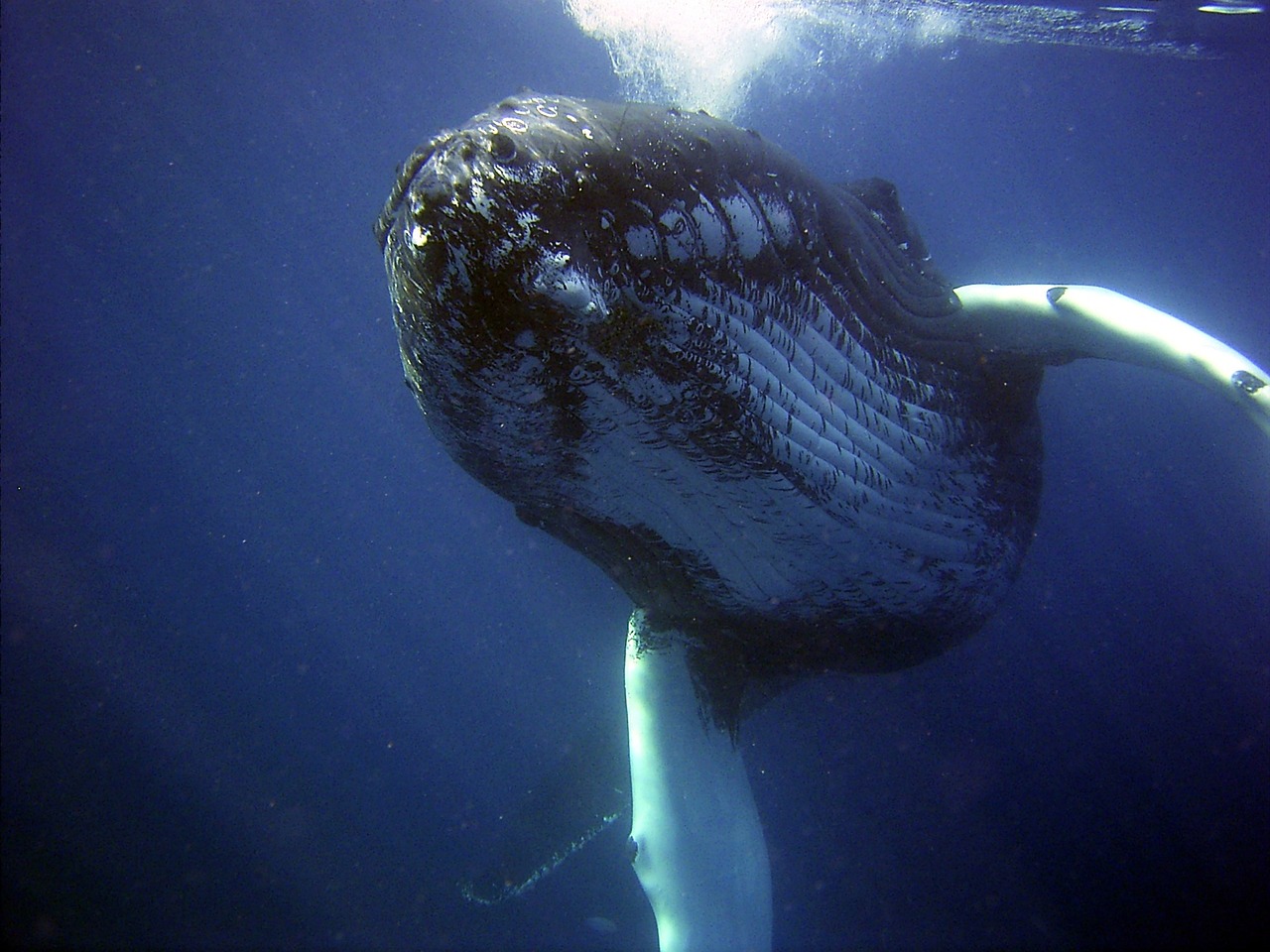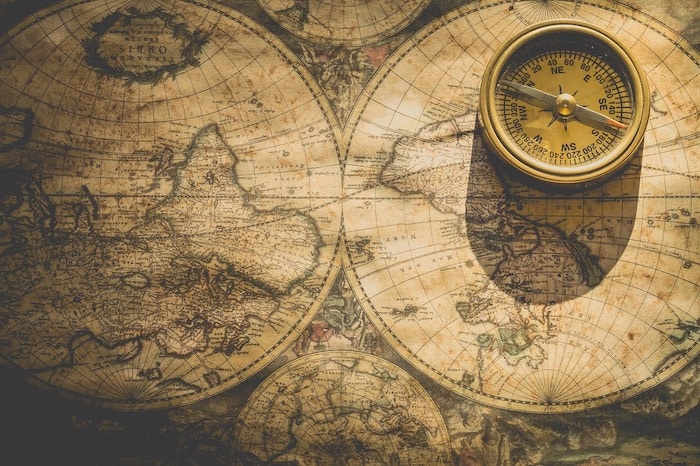Whales are incredibly humongous creatures the size of three long buses stacked on each other. These giants are so big that their hearts are as tall as a fully grown human and heavier than a golf cart.
From humpbacks to killer orcas, the giants of the seas have placed their dominance in the realm of agility and size. However, with a massive footprint comes numerous problems, yet somehow, against all odds, these creatures manage to live for so long that it feels like they are supernatural.
In today’s article, we will be going through 20 incredibly wowing facts about whales that are certified to leave your brain cranking hard. So, relax, and let’s get on the telepathic ride.
- Key Takeaways
- Taxonomy and Flash Facts
- They Can Live for More Than Two Centuries
- Blue Whales Are Heavier Than Two Boeing 737s
- They Travel Half the Circumference of the Earth Annually
- Killer Orcas? More Like Dolphins!
- Killer Orcas Are Among the Fastest Creatures of the Sea
- A Blue Whale Has A Mouth Than Can Take In Another Blue Whale
- Blue Whales' Tongues are as Heavy as an Elephant
- Why are They Called Sperm Whales?
- Brain As Heavy as a Newborn Baby
- They Have Incredible Sonars
- Deeper Than Most Submarines
- Experts at Respiration
- The Air Problem
- Sleeping with Half a Brain
- The Killers With Dialects
- The Tale of Old Tom
- A Risky Birth
- No Humpback Has Been Seen Giving Birth
- The Tale of Moby Dick
- The Exploding Whale Nightmare
- Conclusion
Key Takeaways
- Whales are the largest living creatures on the planet.
- They are filled with many mysteries and secrets that are worth exploring.
- Some are facing extinction because of human activities.
Taxonomy and Flash Facts
| Domain | Eukaryota |
| Kingdom | Animalia |
| Phylum | Chordata |
| Class | Mammalia |
| Order | Artiodactyla |
| Clade | Cetaceamorpha |
| Infraorder | Cetacea |
| Largest | Blue Whale (30 meters) |
| Smallest | Dwarf Sperm Whale (2.7 meters) |
| Year of Origin | Around 50 million years ago. |
Word Origin: The word “whale” originates from the Old English word “hwæl“, which comes from another Proto-Germanic word, “hwalaz“, that stems from a Proto-Indo-European word (s)kwal-o-, meaning ‘large sea fish.’
Habitat: Aquatic (saltwater).
Endangered Status: Endangered.
They Can Live for More Than Two Centuries
Whales are among the longest-living animals besides being the largest creatures on the planet. Humpbacks have a lifespan of a whopping 200 years or approximately the entire history of human inventions, from the Internal combustion engine to social media. However, some can take it up a notch.
The oldest known whale ever discovered was the bowhead whale, which lived for approximately 268 years! This animal was born before over 90% of today’s countries became sovereign states.
Blue Whales Are Heavier Than Two Boeing 737s

It’s no secret that a blue whale is the largest animal on the planet. However, just how heavy are they compared to other objects? These giants are so massive that they will win in a weight contest against two Boeing 737s. That’s right, the Boeings you think look outrageously huge are dwarfed by animals that move deep in the oceans.
For more context, a Boeing can hold about 70,000 kilograms (70 tons); this is no joke in weight classes. However, Blue whales top that scale, coming in at around 150,000 kilograms in weight.
They Travel Half the Circumference of the Earth Annually
Imagine walking from Canada to the United States or across Africa from East to West. Sounds like an impossible task, right? Now imagine yourself doing this every single year. We all know that can only happen in dreams.
However, 11,200 miles(18,000 kilometers) is just another day at the office for whales; these creatures travel almost half the Earth’s circumference annually. Some even take this a notch higher, as they can travel over 14,000 miles. What an incredible feat.
Killer Orcas? More Like Dolphins!

That’s right, the great Killer Orcas are just another species of, you never guessed it, Dolphins. Who would have thought that Orcas are relatives to the same creatures that dance and spin in water parks? Don’t let it fool you, as Orcas sit on the food chain and rule the seas.
Killer Orcas Are Among the Fastest Creatures of the Sea
Imagine three school buses with interlocking teeth coming at you. That may be a reality in the oceans, as Orcas are blazingly fast. They can reach 56 kilometers per hour (36 miles per hour). Let’s hope there are speed limits in the seas. blue whales are also not slacking behind either, as they reach speeds of up to 50 kilometers per hour.
A Blue Whale Has A Mouth Than Can Take In Another Blue Whale
Imagine if you could swallow the person that annoys you the most. That must be a superpower you secretly crave, right? blue whales have mouths so wide that another can swim into them. Though they are filter feeders, they have humongous mouths spanning about 6 meters (20 feet) in width.
Blue Whales’ Tongues are as Heavy as an Elephant
Never would anyone guess that an animal would have a tongue so heavy that it could tip the scale against an adult female African elephant. However, the blue whale does just that. Its tongue measures a whopping 8000 pounds (3600 kilograms). That’s heavier than about two Tesla Model Ys.
Why are They Called Sperm Whales?
We must have all thought of this question before. Why are they called sperm whales? Before you get your mind spinning in multiple directions, they got the name because of a waxy substance in their heads called Spermaceti; this acts like sonar and helps them focus sound. Besides that, it had other uses that humans needed.
From 1800 to 1987, humans violently hunted sperm whales for Spermaceti which is used in making oil lamps, candles, pomades, and textile finishing; this led to a rapid decline in their population. Recently, efforts to save the species have been put into effect.
Brain As Heavy as a Newborn Baby
Besides having gigantic bodies, sperm whales have the biggest brains of any animal. Their brains can reach 4.2 kilograms or the weight of a newborn baby. Incredible right?
They Have Incredible Sonars

What comes to your mind when you hear the word sonar? A submarine with giant torpedoes and fins? sperm whales have remarkably impressive sonars that can travel up to 300 meters. They keep looking like real superheroes, don’t they? Maybe we could get one to help when someone mistakenly drops their diamond ring in the ocean. ‘Wink wink.’
Deeper Than Most Submarines
While most submarines maintain a diving depth of around 500 meters, whales can go way deeper. They can dive thousands of meters into the ocean, even with their weight. A cuvier’s beaked whale holds the current record for the deepest dive made by an animal. It reached an astonishing depth of 2992 meters.
Experts at Respiration
We take in air to stay alive every day. However, most don’t know our bodies absorb only about 15% oxygen. On the other hand, whales absorb oxygen at an astounding 90% rate. They are one of the most efficient creatures in the sea. That is necessary, as they need to dive into unbelievable depths.
The Air Problem
Being a behemoth is most times a problem. Even the largest land animals need a massive amount of oxygen to make their cells create energy from respiration. Now imagine the amount of air creatures the size of three school buses need.
Though they are highly efficient at taking in oxygen, most whales cannot do without coming to the surface to take in air. The majority of them have nostrils and use them for the arduous task of taking in much-needed air.
Sleeping with Half a Brain
You must have, at some point, wondered how these giants sleep. If they always come to the surface to take in oxygen, then there is no way they can remain submerged underwater while taking their power naps. Right? So, how do these giants go to slumber without drowning? They do this with a combination of half their brains and well-timed sleep cycles.
Whales switch off half of their brain hemispheres while in a slumber position that makes them look like wooden logs, called logging. Some species also take well-timed naps of 10-15 minutes and can do this for about 2 hours daily.
The Killers With Dialects

Orcas are not just one of the fastest or the deadliest whales but also one of the most unique mammals on the planet. They have their dialects and cultures. That’s right, Orcas in different regions have distinct group-calling patterns and hunting strategies synonymous with dialects.
Are you thinking what I’m thinking? How about we tell some of the British Orcas to pronounce, well, you guessed it, “A BOTTLE OF WATER.” No offense, my English folks, we love you all here at Fact Finders.
The Tale of Old Tom
Have you heard the story of the whale that protected humans? It was the 1920s, an era known for intense wars and whaling, the practice of hunting sea mammoths for food and their oil. Amid the chaos, one Orca and his pod developed a unique friendship with Whalers off Australia’s southeastern coast.
Nicknamed Old Tom, the Orca worked closely with sailors and helped them to hunt for sperm whales and other whale species. Old Tom grew so close to the whalers that he protected anyone who fell overboard.
A Risky Birth
One question that also comes to mind when thinking about the massive creatures of the sea is how they reproduce. Since they are so large, how do they give birth and care for their children? The answer to this question shows just how complex the triple school buses of the ocean are.
Since they are mammals, whales give birth to their offspring alive. That’s not all. On giving birth, a mama whale has to push her child to the surface so it can take its first breath. Talk of becoming a scuba diver at birth.
No Humpback Has Been Seen Giving Birth
You have been looking for the John Cena of whales. Search no further as I present the elusive humpback whales, creatures so stealthy that no one has ever recorded them giving birth.
Though most scientists believe Humpbacks give birth while migrating to warmer climates, no one has ever seen or recorded the process. We may need to interrogate some Humpback midwives to find out what’s going on. Don’t you think?
The Tale of Moby Dick
I know you must have heard of “Moby Dick,” one of the most impressive pieces of literature to grace the surface of the Earth. But do you know the novel is about a man versus a whale?
Yes, “Moby Dick” tells the story of Captain Ahab, a whaler, who hunts down a great white whale responsible for taking his leg. Did Ahab succeed? Did he fail? That’s a question that can only be answered by reading the book. We are no spoilers.
The Exploding Whale Nightmare
In 1970, a dead sperm whale washed ashore in Florence, Oregon. Little did people know it would end up a nightmare. After planning the next step of action, officials laced the dead whale with explosives, believing it would blow the creature into tiny bits for birds.
However, chunks of the animal flew into the air after its explosion. Everyone at the event was covered in sperm whale matter, and though no one was injured, chunks from the animal smashed a nearby car.
Conclusion
That’s all we can tell you for today. Tell us, which fact got you wowed, ewwed, and awwed the most? We would love to hear your thoughts.
Also, don’t forget to check out our other fantastic articles, we have more coming. Also, leave us a comment and share. You can check out our animal facts page. Till we meet again.





